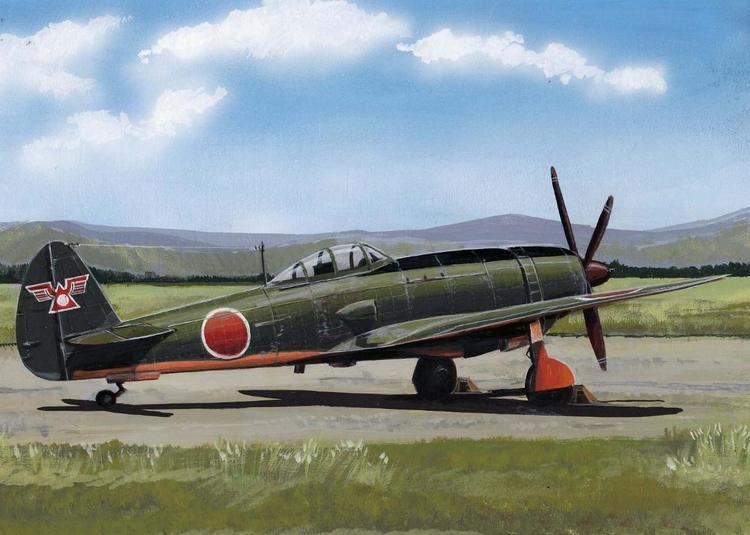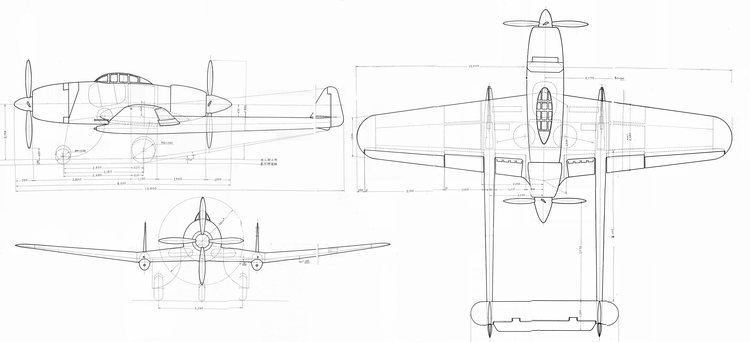Top speed 712 km/h Length 12 m | Wingspan 14 m | |
 | ||
Manufacturer Tachikawa Aircraft Company | ||
Tachikawa ki 94 ii
The term Tachikawa Ki-94 refers to two designs of the Tachikawa Hikoki K.K. aircraft factory.
Contents
First Ki-94

The first was a twin-boom monoplane with two 1,641 kW (2,201 hp) Mitsubishi Ha211 18-cylinder engines, driving two 4-blade propellers in a push-pull configuration. The very heavy armament that should have been mounted on the aircraft (two 37 mm/1.46 in and two 30 mm/1.18 in cannons, should have been enough to make short work of most US heavy bombers of the era. Notwithstanding the outstanding prospective performance, which however was judged as "unduly optimistic" by the technical department of the Japanese Army Air Force, this design was judged too complex by the technical department and the design was discarded.
Second Ki-94

The second Ki-94 design, made by a team under Tatsuo Hasegawa, chief designer of the aircraft and responsible for the used airfoil, was a more conventional single-seat, piston-engine monoplane fighter, developed for the Imperial Japanese Army Air Force along the same requirements as the Nakajima Ki-87, which had been the Army's fall-back design for the original Ki-94. Intended to counter B-29 raids, it was optimized for high-altitude interception with a pressurized cockpit and heavy armament.

This design was approved by the Koku Hombu, and the aircraft was designated Ki-94-II (the scrapped earlier Ki-94 design was named the Ki-94-I). An order was placed for one static test airframe, three prototypes, and eighteen pre-production aircraft. Only 2 prototypes were built in the event; the first was equipped with a single 1,895 kW (2,541 hp) Nakajima Ha219 [Ha-44] engine, driving a 4-blade propeller because the 6-blade one was not ready. The second prototype was to be fitted with a 6-blade propeller. The war's end however stopped the construction of the second prototype and also found the first prototype still being readied for its maiden flight, the Ki-94-II never taking to the air.
Specifications (Ki-94-II (estimated performance))

Data from Famous Aircraft of the World, first series, no.76: Japanese Army Experimental Fighters (1); Japanese Aircraft of the Pacific War
General characteristics

Performance

Armament
